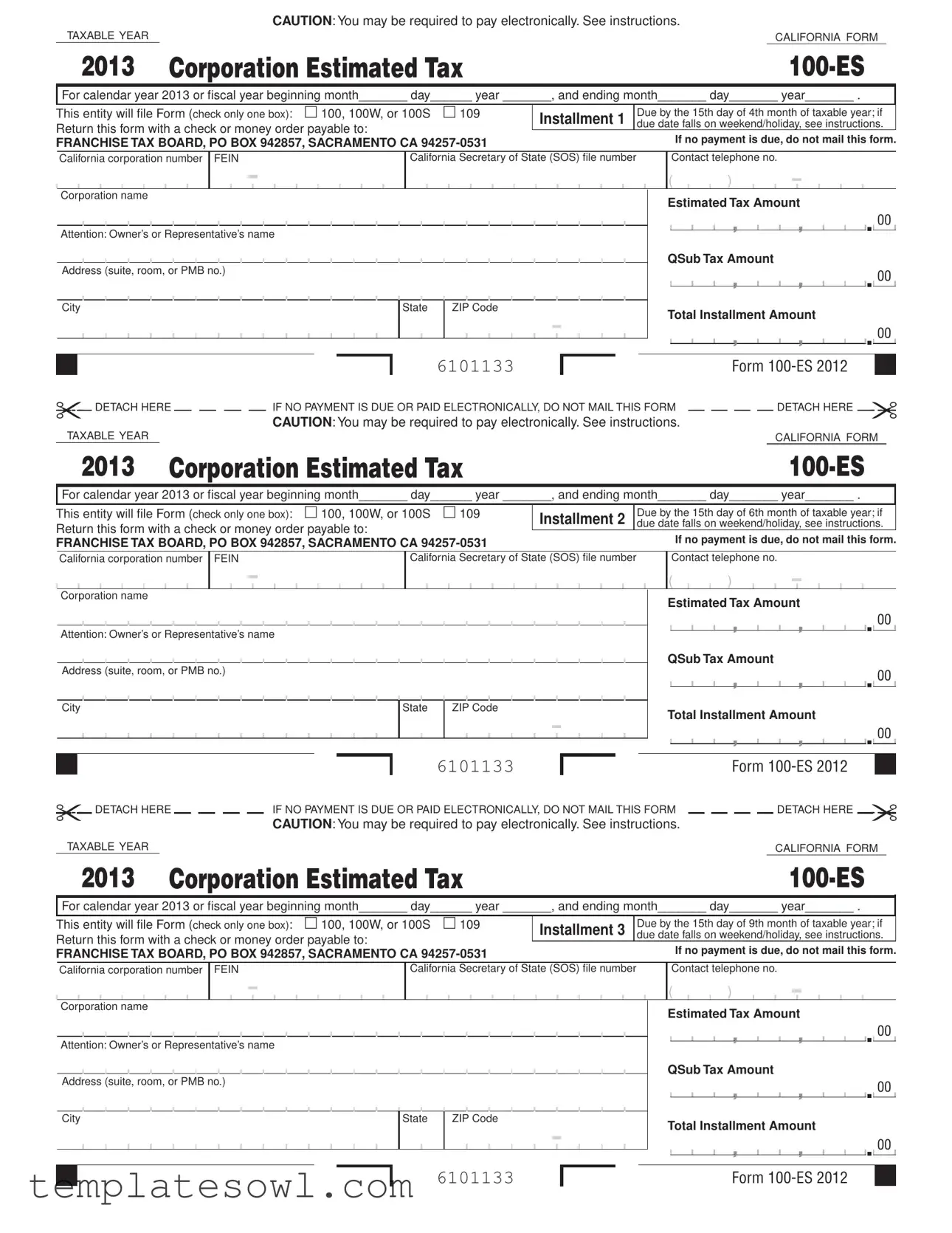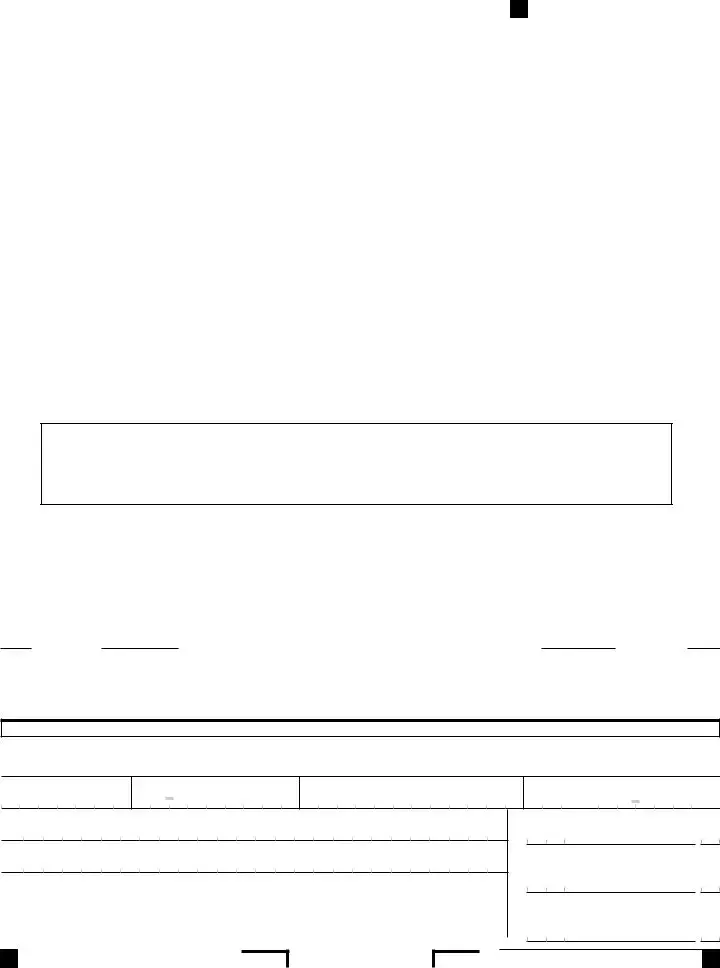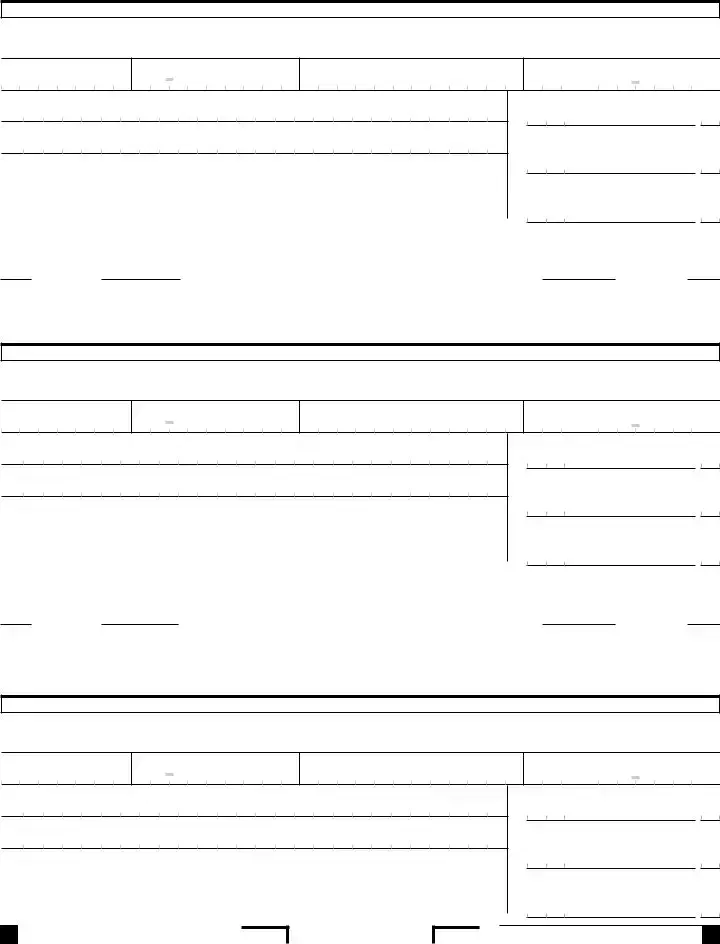What is California Form 100-ES used for?
The California Form 100-ES is a tax form for corporations required to make estimated tax payments. This form is applicable for taxable years that align with either the calendar year or a specified fiscal year. Corporations use it to report and pay estimated taxes in installments throughout the taxable year. Proper submission of this form ensures compliance with California tax regulations and helps businesses avoid penalties for underpayment.
When are estimated tax payments due?
Estimated tax payments follow a specific schedule. Generally, the due dates align with certain milestones in the taxable year. For a calendar year corporation, these dates are as follows: the first installment is due by the 15th day of the fourth month, the second installment by the 15th day of the sixth month, the third installment by the 15th day of the ninth month, and the fourth installment by the 15th day of the twelfth month. If any due date falls on a weekend or holiday, the taxpayer should refer to the specific instructions for adjustments.
How should I submit Form 100-ES?
Form 100-ES can be submitted electronically or by mail, depending on the payment method chosen. If paying by check or money order, the completed form should be sent to the Franchise Tax Board at the designated P.O. box address in Sacramento. Alternatively, corporations may opt to pay online through the Web Pay for Business service available on the Franchise Tax Board’s website. This online option allows users to schedule payments in advance, providing additional convenience and efficiency.
What should I do if no payment is due?
If no estimated tax payment is required for a particular installment, you do not need to mail the form. It is advisable to only submit Form 100-ES when there is a payment due. Failure to adhere to this guideline helps reduce unnecessary paperwork and keeps the process streamlined. Always consult the instructions provided for further clarification regarding specific circumstances.



 ,
, 



 ,
, 



 ,
, 



 ,
, 



 ,
, 



 ,
, 



 ,
, 



 ,
, 



 ,
, 




 ,
, 



 ,
, 



 ,
, 

